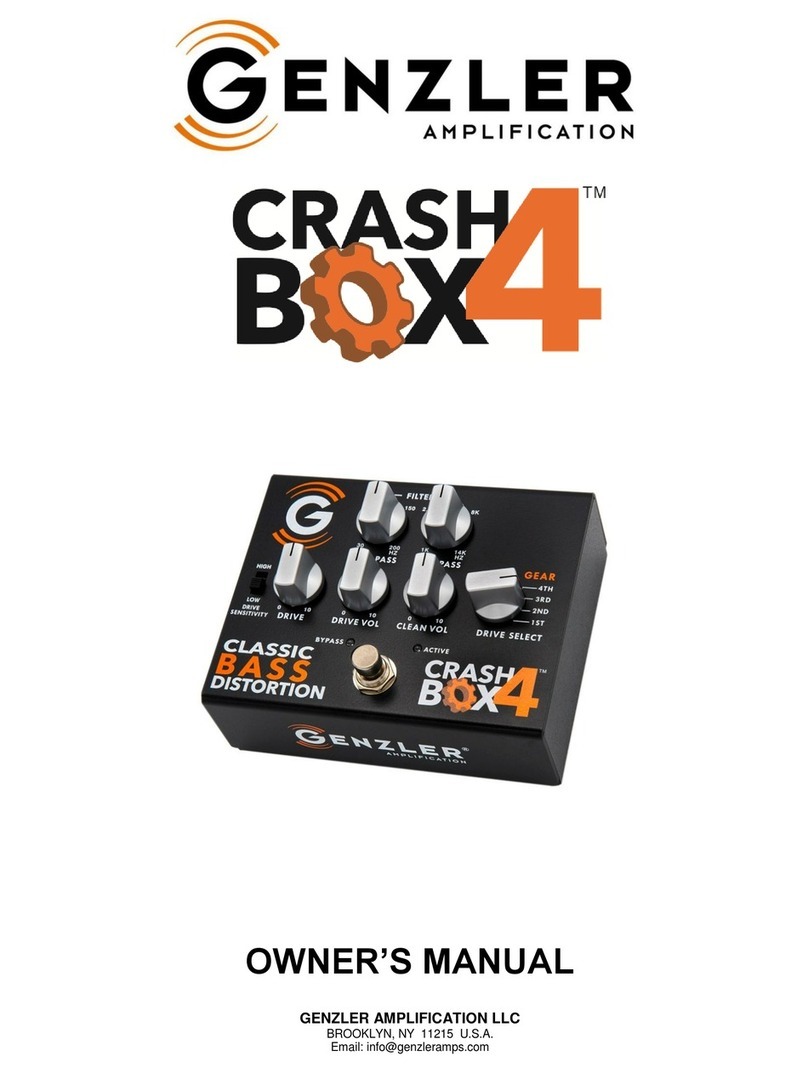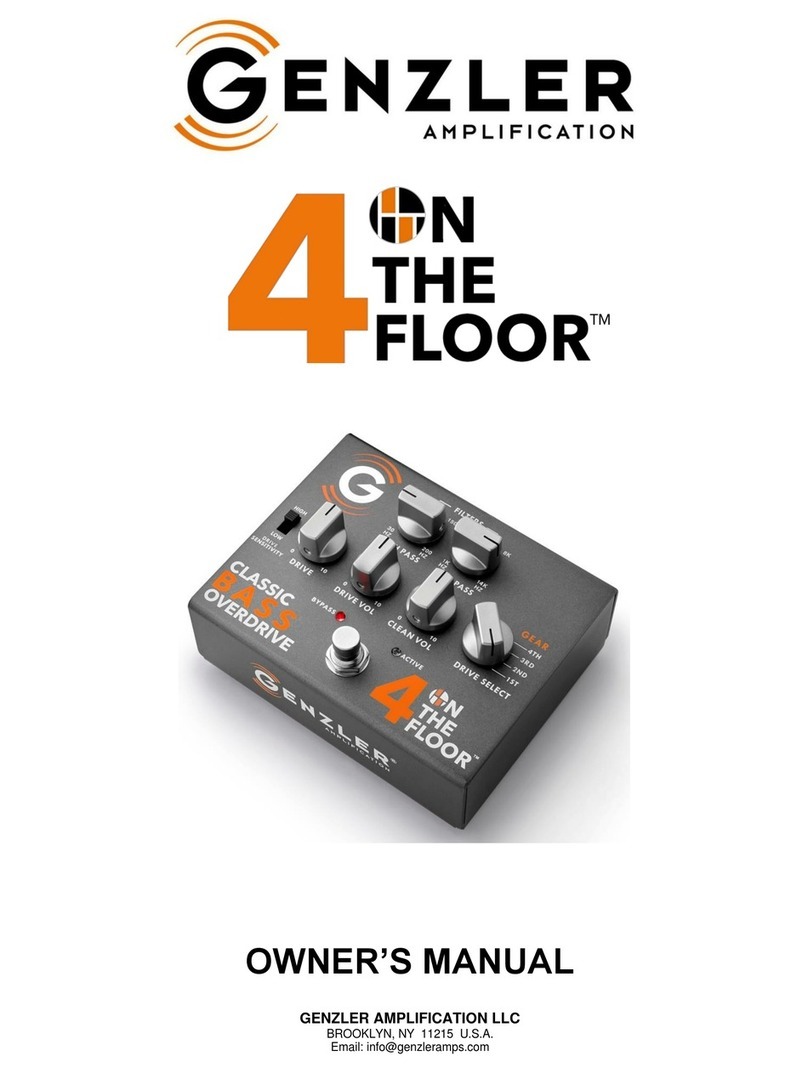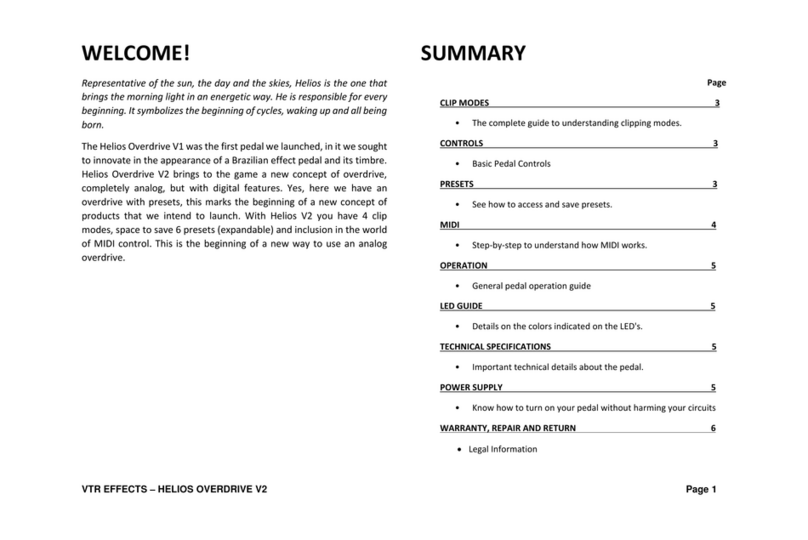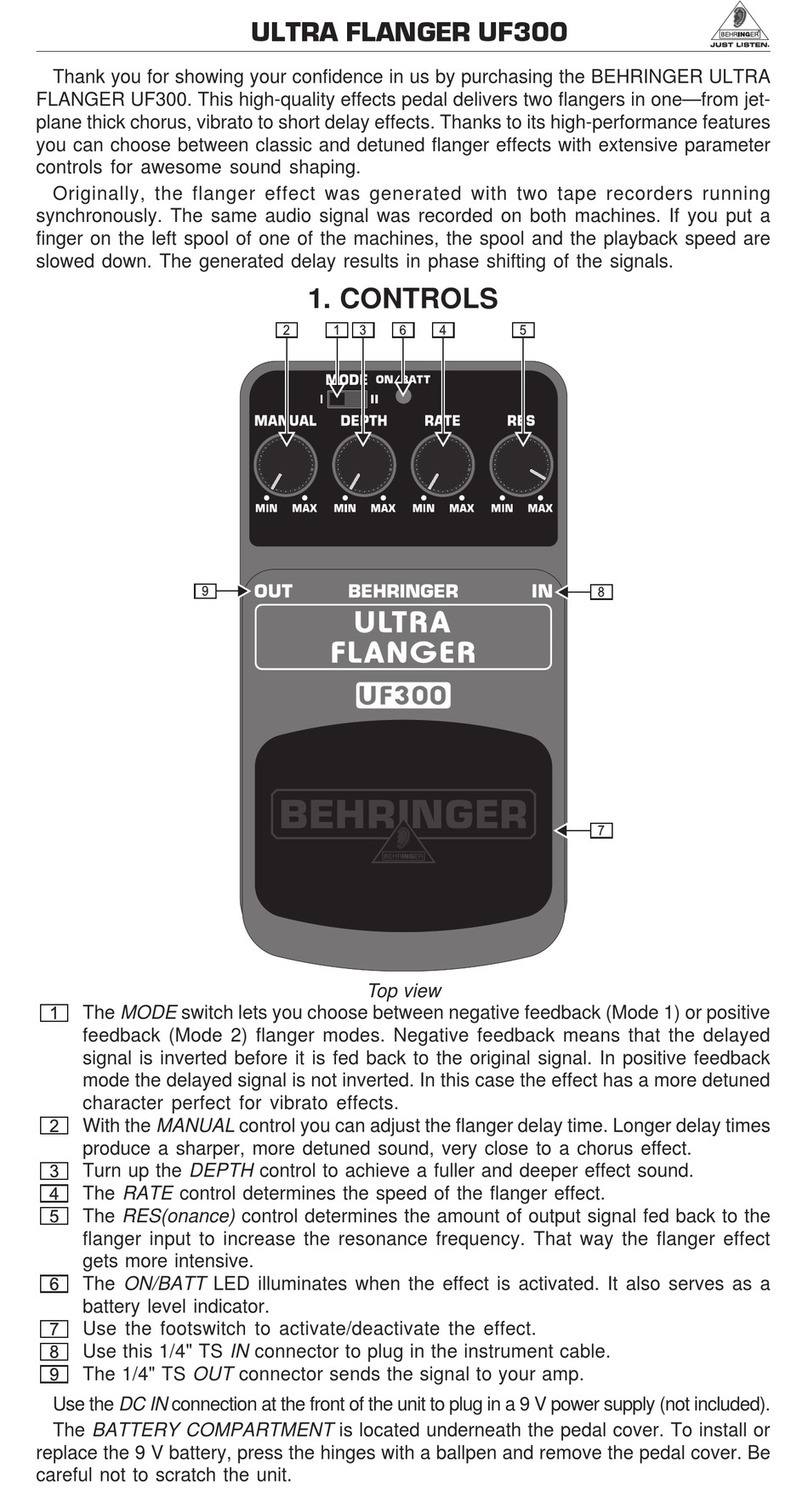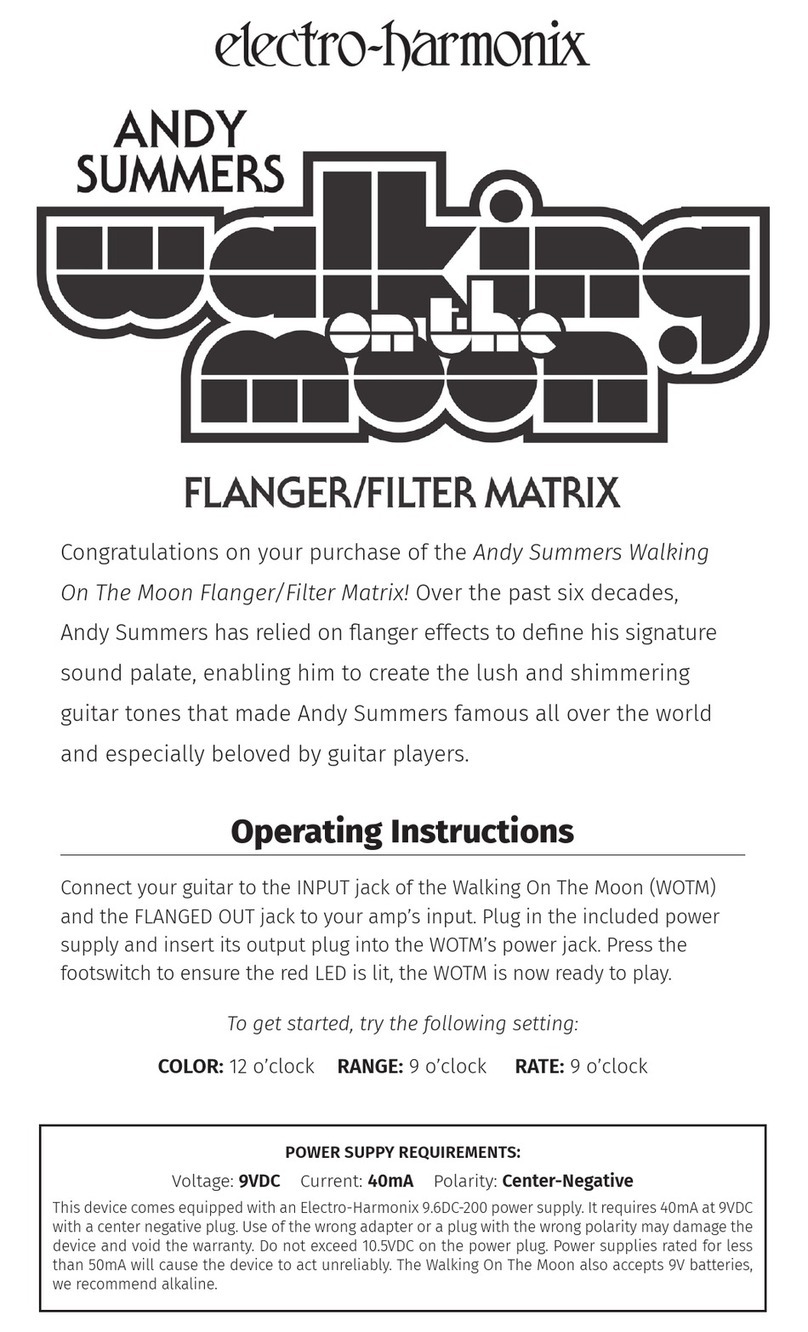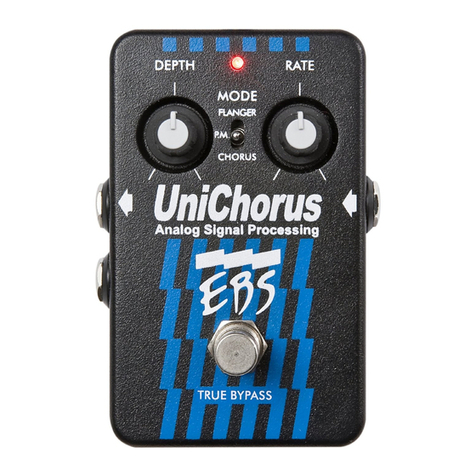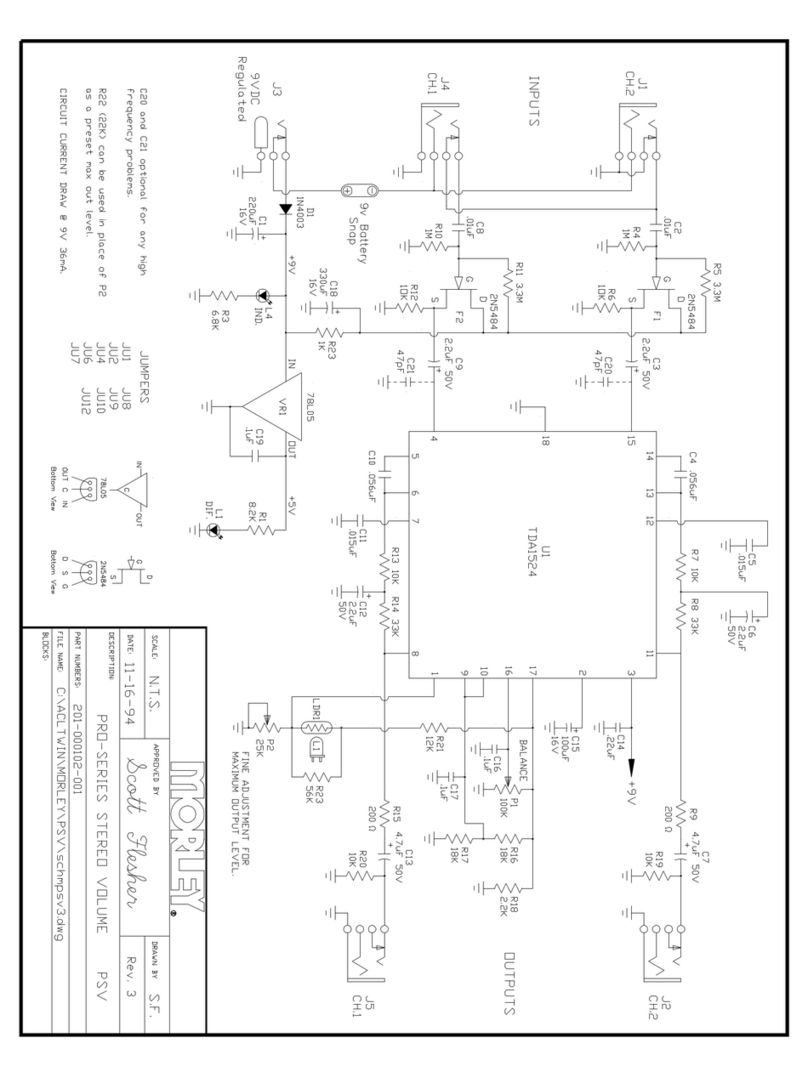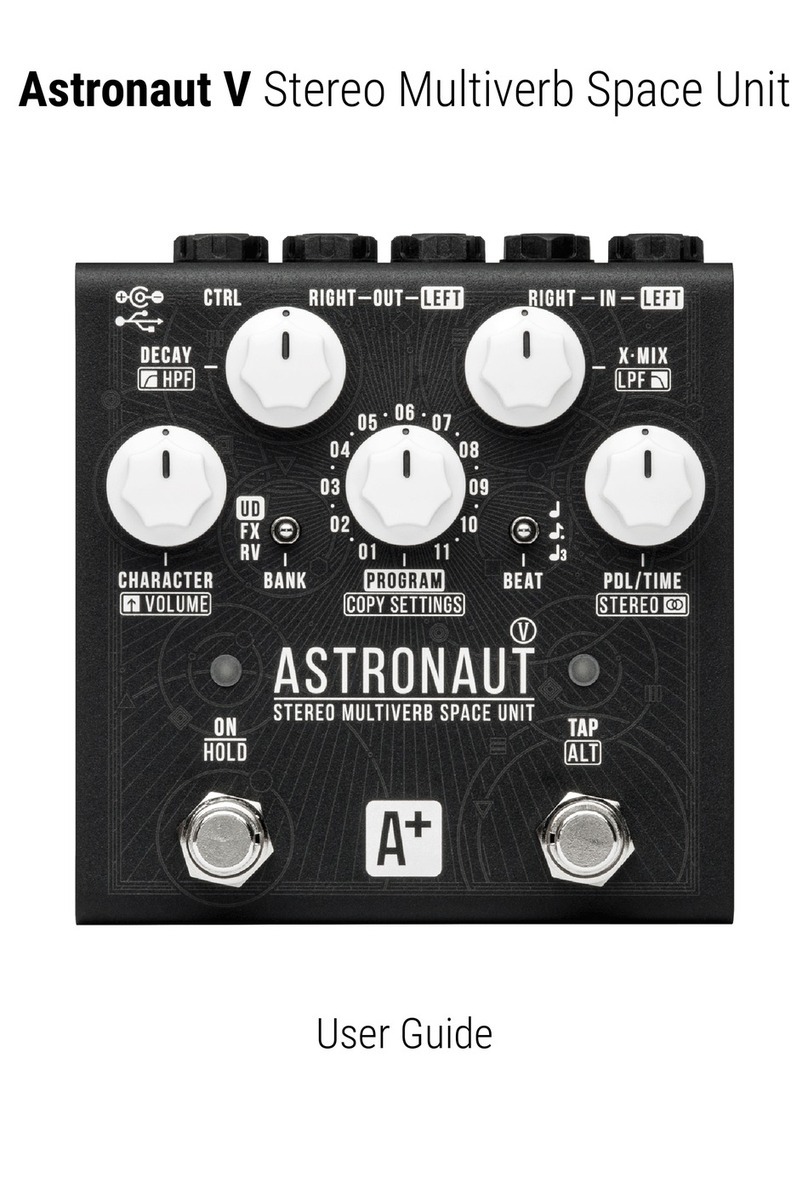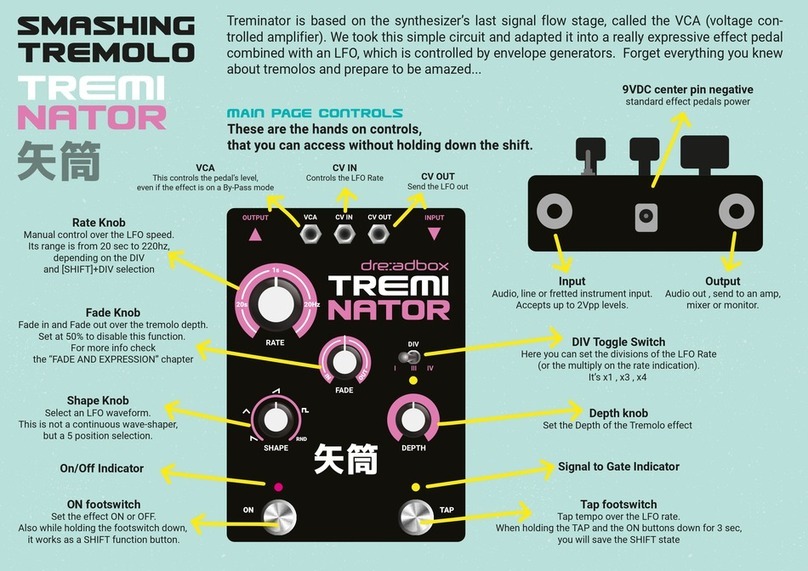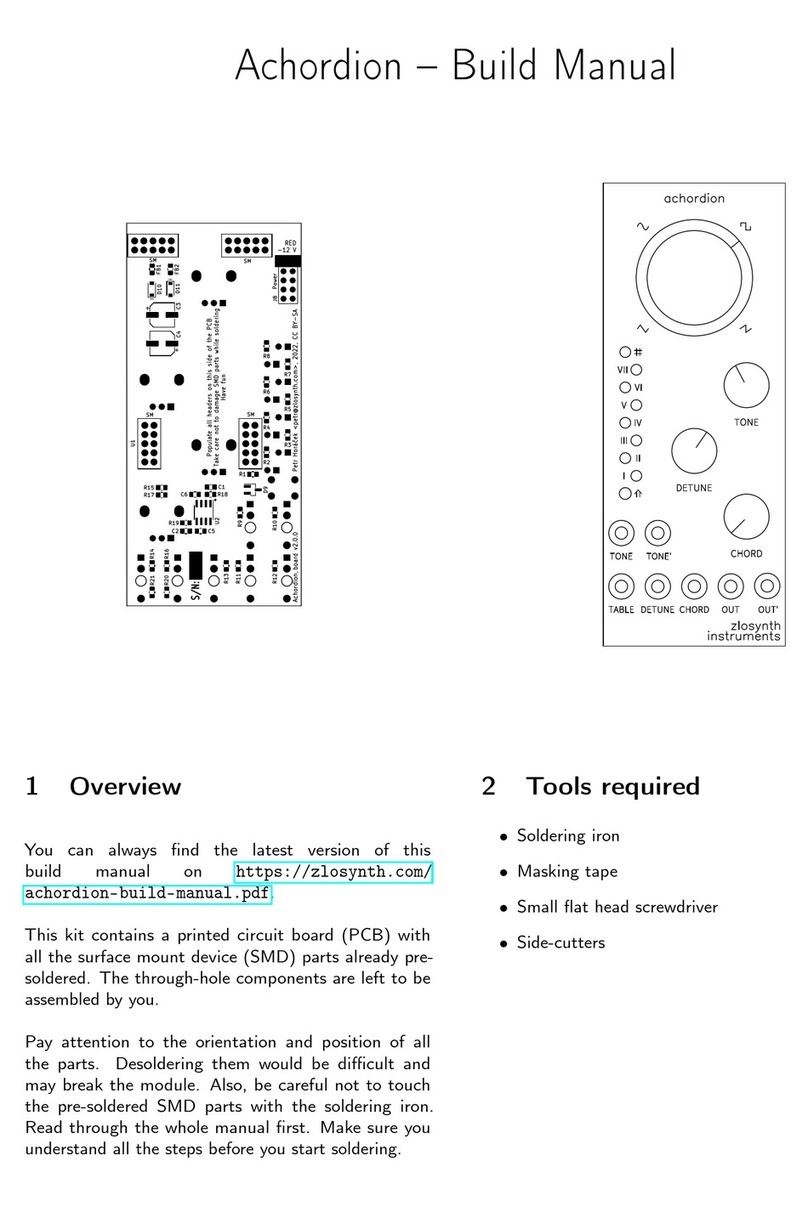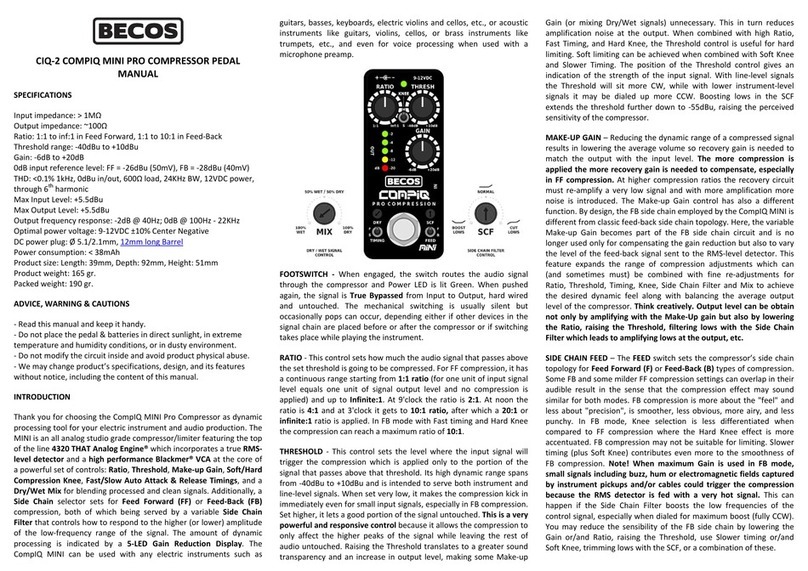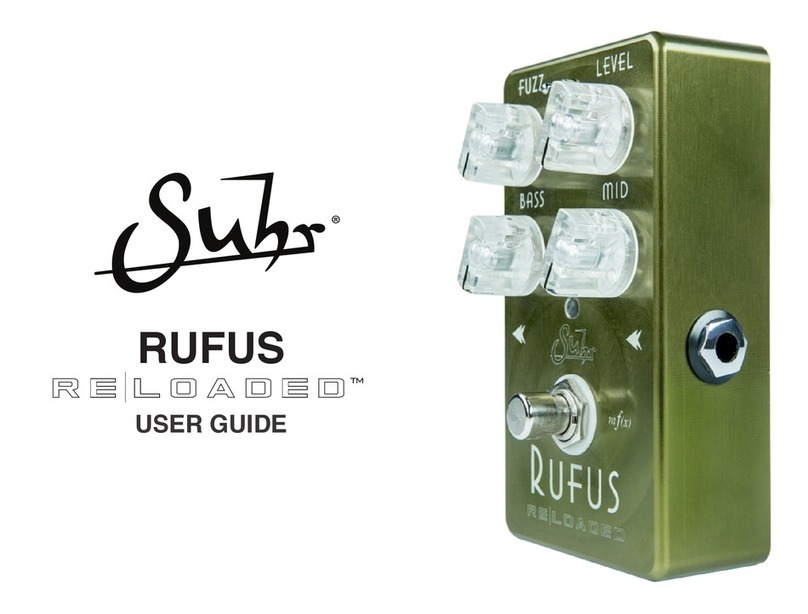GENZLER re/Q User manual

OWNER’S MANUAL
GENZLER AMPLIFICATION LLC
BROOKLYN, NY 11215 U.S.A.
Email: info@genzleramps.com

PRODUCT DESCRIPTION – The
re/Q
™DUAL FUNCTION EQ PEDAL is a low noise, ALL ANALOG multi-function HIGH PASS FILTER – LOW PASS FILTER – 5
BAND EQ pedal that gives the player tonal control over the cut-off of the extreme low and high frequencies, plus 5 bands of peak-dip equalization. The filter section is
foot switched independently from the EQ section, and there is additional make-up gain/cut after the EQ for balancing of levels or to act as an additional boost/cut
function when the EQ is switched into the signal path. The Re/Q is also a great companion to our 4 ON THE FLOOR Classic Overdrive Pedal. It can be used to tailor
your instrument’s tone for various overdrive settings, or increased boost levels.
HIGH PASS FILTER (LOW CUT) -. This control sets the low frequency roll-off point of the signal, and is used to reduce the low frequency extension of the signal by
rolling off the low frequencies earlier as the control is rotated CLOCK-wise. This is an important feature in maintaining control over the extreme low end (especially
under high drive conditions). While HPF’s have been standard within the pro audio industry for decades, this feature has only appeared in bass and acoustic guitar
amplifiers fairly recently. This filter provides additional mechanical protection to the speakers from over-excursion by reducing the power to the speaker below the
frequency range that the speaker cabinet provides adequate acoustic loading to the drivers. This is one of the primary (and preventable) causes of premature
speaker failure, especially with compact speaker cabinet products that are driven very hard. A second use for this filter is to roll off the very low end when overdriving
the amp. This prevents the signal from becoming muddy, and preserves the naturally musical growl and grit of the overdriven signal. A third use is for rolling off the
extreme low end when boosting the bass (or low frequency) eq control, allowing for some unique low mid voicings and increased low mid clarity, and a fourth use is
for reducing the sub-bass frequencies that can get out of hand in a boomy room. Experimentation will be helpful in all of these applications.
LOW PASS FILTER (HIGH CUT) -. This control sets the high frequency roll-off point of the signal, and is used to reduce the high frequency extension of the signal
by rolling the high frequencies off earlier as the control is rotated COUNTER-clockwise. This is the ideal control to use when seeking a more vintage, warmer or
darker tone, or when there is excessive brightness present that gets in the way of how the bass sits in the stage mix. Other uses include taking the edge off of round
wound strings, when looking for an older school jazz tone, or for acoustic gigs where the bass needs to sit a little mellower in the mix. Experimentation will be helpful
in these applications too.
FILTERS FOOTSWITCH - Pressing the footswitch alternates the pedal’s operation between BYPASS mode (RED LED) and FILTERS mode (BLUE LED).
EQ CONTROLS – These 5 controls are traditional peak-dip (or bell) style filters, each control is responsible for the level (or volume) of the corresponding band
relative to the rest of the spectrum. These are active controls with boost and cut, where the amount of boost is proportional to the clockwise rotation to the right of
“flat” (12:00 straight up) position and the amount of cut proportional to the counter-clockwise rotation to the left of “flat” (12:00 straight up). The control’s taper is
tailored to provide finer, smoother, more musical control between 9:00 and 3:00 with more dramatic action beyond these points. Note: EQ frequency points are listed
in the SPECIFICATIONS section of the Owner’s Manual.
EQ OUTPUT LEVEL – This control allows adjustment of the output of the eq section only, and can be used to “normalize” the level after eq adjustment. Since the eq
section is foot switched, this control may also be used to set a level along with eq that will be switched into and out of the signal path along with the eq. – like a “clean
boost” function.
EQ FOOTSWITCH - Pressing the footswitch alternates the pedal’s operation between BYPASS mode (RED LED) and EQ mode (BLUE LED).

INPUT – Pedal input, nominally instrument level but can accept line level as well. When operating at line level, greater headroom is available with a 12V, 15V or 18V
power supply. Input impedance is 1M ohm.
POWER JACK - This pedal contains circuitry that auto-detects both the voltage and polarity of the attached power supply. The pedal will function properly from 9V to
18V, center positive or center negative polarity. With very high output basses and line level signals, you may notice more input headroom with 12V or higher power
supplies. Be sure to use a low noise pedal type power supply, general purpose power supplies can introduce noise into the signal path.
OUTPUT – Pedal output, nominally instrument level but can output up to line level. When operating at line level, greater headroom is available with a 12V, 15V or
18V power supply. Output impedance is 1k ohm.
THEORY – This pedal is designed as an essential tool for tone shaping and in reality, it is two complete pedals in one integrated fully foot-switchable package. Each
section contains a different type of filter, HIGH PASS/LOW PASS filters and 5 BAND EQ (bandpass boost/cut) filters. These filters can be used to fine tune a player’s
tone.
FILTERS - The HIGHPASS filter is used to limit the low frequency extension of the signal and the LOW PASS filter is used to limit the high frequency extension of the
signal. This allows the low and high frequency content to be eliminated without affecting the rest of the spectrum.
5 BAND EQ – The EQ section allows individual frequency bands to be boost or cut, for fine tuning of the tones within the extended midrange of most instruments.
Generally, a little EQ goes a long way depending on the player’s goals. The output trim can be used to either normalize the output (compensating for eq boost/cut to
maintain the same overall volume, or can be used to include an additional boost/cut when the EQ section is switched in.
SPECIFICATIONS:
Dimensions: 6” (127mm) W x 4.1” (104mm )D x 2.3” (59mm)H (w/ knobs and feet)
Weight: 1.3 lb (0.6kg)
Power Supply: 9VDC-18VDC (low noise type), either polarity (auto-detecting), 40mA max
HIGH PASS Filter Range: 30Hz – 200hz
LOW PASS Filter Range: 1kHz – 16kHz
EQ Filter Points:
-LOW: 90 Hz
-LOW MID: 250Hz
-MID: 630Hz
-HIGH MID: 1.3kHz
-HIGH: 2.6kHz
EQ Band Control Range: +/-12dB
EQ Output Level Control Range: +/-9dB
Input Impedance: >1M ohm
Input Sensitivity (nominal): -10dBu to -20dBu (instrument level)
Input Level (maximum): >0dBu (9V supply), >+5dBu (12V supply), >+10dBu (18V supply)
Output Impedance: 1k ohm
Output Level (nominal): -10dBu to -20dBu (instrument level)
Output Level (maximum): +9dBu (9V supply) +14dBu (12V supply), +20dBu (18V supply)
[form: re/Q-OM-WEB-REV1]
Table of contents
Other GENZLER Music Pedal manuals
